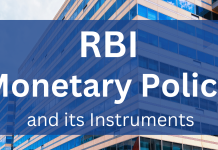The Securities and Exchange Board of India (SEBI) is a key player in India’s stock market regulation today, just like the Securities and Exchange Commission (SEC) does in the United States. SEBI’s main job is “to look after the interests of people buying and selling stocks and to help the stock market grow while making sure it follows certain rules.” The setup and strengthening of SEBI in the late 1900s was a big step toward making India’s stock markets more reliable and well-regulated.
India’s journey to build this framework tells a tale of ongoing change, tweaks, and updates. Before SEBI came to be in 1988 and got more power in 1992, controlling stock markets in India was a job for various groups and saw many changes. These first steps to regulate, though scattered and often not enough, set the stage for the much organized and full system SEBI would later make.

Through this blog, we hope to dive deep into the intricate history of stock market regulation in India before SEBI was a thing. We hope to shed light on the most important milestones and challenges that stock market regulation has seen. Along with that, we will also look at some of the most important reforms that shaped the regulatory landscape for stock markets. From the self-regulation of the first stock exchanges to huge pieces of legislation such as the Indian Companies Act of 1913 and the Securities Contracts (Regulation) Act of 1956, we will explore the evolution of market regulation. We will also take a look back on the journey that led to the formation of a single regulatory body that culminated in the formation of SEBI. Through this blog, we hope to give you a deeper understanding about the dynamic and ever-changing nature of Indian securities market regulation.
History of Stock Market Exchange in India
The Securities and Exchange Board of India in its modern form was incorporated in April 1992 after the passage of the Securities and Exchange Board of India Act through the Indian Parliament. It replaced the Controller of Capital Issues, which regulated the securities markets under the Capital Issues (Control) Act, 1947. It had been passed just months before India gained independence from the British Empire. Let’s take a closer look at how the stock market was regulated in India before SEBI became a reality.
The Emergence of Stock Exchanges
The history of buying and selling stocks in India dates to the 18th century and culminated in the establishment of the Bombay Stock Exchange (BSE) in 1875. The Bombay Stock Exchange is well-known as the oldest stock exchange in Asia. Initially, the BSE operated without a proper regulatory body and depended on its own set of guidelines as a substitute. These self-imposed regulations were strongly influenced by the British regime in India. As a result, it reflected the colonial government and monetary systems prevalent during that time.
Traders on the BSE ran their activities with a degree of autonomy and enforced their policies through a committee of brokers whose aim was to maintain order and fair-trading practices. This marked the early stages of organized stock trade in India and laid the foundational practices and traditions that would develop into a larger state-of-the-art and controlled facility. Despite the lack of formal oversight, BSE’s early operations were instrumental in creating a market tradition and infrastructure that could later be transformed through complex regulatory frameworks.
The Indian Companies Act, 1913
The Indian Companies Act of 1913 was one of the early moves to keep check on the stock market. This law set rules for how companies start, run, and close, which also touched the stock market side. It made companies sign up and laid out how they should be run to stop bad acts and keep investors safe.
Post-Independence: The Need for Regulation
After becoming independent in 1947, India had to rebuild its economy and set up a stable money system. The time right after independence showed the clear need for strong rules to watch over the growing stock markets and keep investors safe. The government brought in the Capital Issues (Control) Act of 1947 to watch over how securities were given out and to make sure money went to important sectors. This Act made companies get permission from the government before they could share stocks and bonds, aiming to manage the flow of money and stop wrong use.
Additionally, once the Companies Act in 1956 came into being, it marked an important step in Corporate Regulation in the country. For one, it helped in providing a series of guidelines that assisted in creating and regulating companies. Secondly, it also helped with the management of said corporation. But it needs to be said that despite these efforts, the absence of an actual regulatory authority did lead to some mismanagement and malpractices. This led to the rather urgent need for a more structured approach to market oversight. It was this need that eventually lead to the establishment of SEBI.
The Capital Issues (Control) Act, 1947
After India became independent in 1947, the country was forced to rebuild its shattered economy from scratch. The government came up with the Capital Issues (Control) Act in 1947 so that there would be some control in allotting scarce resources and capital. This Act meant that companies needed government permission to issue shares and debentures. This meant the capital was directed towards sectors that were a priority. When the Companies Act of 1956 was created, as mentioned earlier, it lead to the consolidation and amendment of laws related to companies and a move to improve corporate governance.
Birth of Controller of Capital Issues (CCI)
When the Capital Issues (Control) Act was set up, it was the Controller of Capital Issues (CCI) that acted as the primary regulatory authority for the stock market. The CCI was tasked with the responsibility for providing approval and regulation when it came to issuing securities. But its role was primarily administrative in nature. It focused more on controlling capital flow. It did not concern itself too much with the duty of stock market regulation and its daily functioning.
During this period, stock exchanges like the BSE and the Calcutta Stock Exchange (CSE) regulated their duties without external supervision. The two stock giants had their own set of regulations. These rules were enforced and created by an elected committee. While this self-regulation was commendable and worked to a certain extent, there was a flip side to it. There was the key issue of transparency, and the much-needed accountability which was missing.
The Securities Contracts (Regulation) Act, 1956
The Government then came up with the Securities Contracts (Regulation) Act (SCRA) to focus on the need for a far more structured framework which could regulate the stock market. The SCRA hoped to get rid of any malpractices in transactions when it came to securities. It also hoped to regulate the system of shares and securities altogether. The SCRA provided the legal framework which would then go a long way in recognizing the regulation of stock exchanges in India.
Market Scams and the Need for Reform
As time went on, the era of the 70s and 80s were terrible for the Indian Stock Market. This was simply due to the appearance of several high-profile scams and market manipulations. The Haridas Mundhra scandal in 1957 which involved selling shares to government-owned organizations illegally. Scandals like this really exposed the weak link that was there in the regulatory framework. It ultimately highlighted the need for far more dedicated regulatory authority for stock exchanges in the country.
In response to this problem, in 1988, the Securities and Exchange Board of India (SEBI) came into being as a non-statutory body. In the beginning, SEBI was more focused on the regulating the securities market and protecting the interest of the investors. But it needs to be said that the earliest form of SEBI did not have the powers to carry out the regulation duties it was established for. This situation changed in 1992 when SEBI was granted statutory status through the SEBI Act. Ultimately, SEBI became the powerful and independent organization we see today.
Key Challenges in the Pre-SEBI Era
Before SEBI came into being, many regulatory authorities, from the CCI to SCRA, faced some challenges. Let’s take a look at three of the more important problems it faced below:
- A Weak and Broken Regulatory Framework: It needs to be said that one of the major issues that early organizations faced in the pre-SEBI era was the weak and broken regulatory framework that overlapped with each other. There were a lot of organizations which included established institutes like the Ministry of Finance, and the Reserve Bank of India (RBI), and stock exchanges themselves. Each of these institutes and organizations had a central role in regulating various aspects of the market. These overlapping ideas and approaches often led to inefficiencies in the management of the market.
- No Investor Protection: Another key problem that cropped up was the lack of protection for investors. This was especially a concern Investor protection was a significant concern before SEBI. The absence of a dedicated regulatory body meant that there were limited mechanisms to address investor grievances and ensure fair practices. Insider trading, market manipulation, and other malpractices were rampant, eroding investor confidence.
- Limited Market Development: The regulatory focus during the pre-SEBI era was primarily on controlling capital issues and preventing malpractices rather than promoting market development. This approach stifled innovation and limited the growth potential of the Indian stock markets. The lack of a forward-looking regulatory framework hindered the introduction of new financial instruments and trading practices.
The Transition to SEBI And its Early Initiatives
From its earliest days of initiation in 1988, SEBI, though on the radar of the stock market scene, was not an overt presence. This changed when the Harshad Mehta scam of 1992 hit the news. It was a decisive moment in the history of Indian stock market regulation and became the turning point for the country. The Harshad Mehta scam involved the manipulating of stock prices illegally. The scam exposed all the weaknesses and vulnerabilities that were prevalent in the current regulatory framework. It was this scam that triggered the government to come up with a far more comprehensive reform for the stock market. Ultimately, it led to a situation where SEBI was given statutory powers.
With the SEBI Act of 1992, there was a very significant turning point when it came to regulating the Indian Securities Market. The SEBI Act granted the organization all the authority they needed when it came to regulating and overseeing the major aspects of the Indian stock market. This also included such aspects like stock exchanges, brokers, and listed companies. The act gave SEBI the authority to enforce compliance, conduct investigations, and take immediate countermeasures against violators.
In its early years, SEBI took up a lot of initiatives they used to establish its reputation as an effective regulator of the stock markets by bringing about revolutionary changes and taking up several new projects. The institute introduced some new measures that would being about transparency in dealings and improve disclosure standards. Ultimately, the aim was to strengthen corporate governance practices. SEBI also focused on building a stronger framework to protect investors with the establishment of the Investor Protection Fund and by creating investor education programs.
Prepare for SEBI Exams with ixamBee
ixamBee is rather an important tool for those keen on the stock markets and are preparing for SEBI Grade A recruitment exams. The platform provides important insights into the SEBI Grade A Exam Pattern and Syllabus, and helps them in establishing a strong groundwork for their preparation journey. Aspirants can also make use of ixamBee’s SEBI Important Questions platform which helps students prepare for the upcoming SEBI exams with important questions that are likely to be asked. Along with that, ixamBee’s SEBI Grade A Online Course caters to diverse streams, including Legal, Information Technology, Research, and Official Language. Crafted by seasoned faculty members, the course offers top-notch guidance through video lectures, live classes, and practice quizzes, tailoring the learning experience to each stream’s specific requirements, including BeePedia for the General Awareness segment.
Summing Up
The evolution of stock market regulation in India before SEBI was on the government’s radar is a story of success and turmoil, in equal measure. It stands as a testimony to India’s emergence on the share market scene with a modern and far more efficient financial system. While it’s true that pre-SEBI frameworks had their own limitations, it laid the groundwork for everything that came after. These challenges that pre-SEBI era was peppered with offers a lot of tough lessons that still shape up India’s regulatory landscape.
To help you prepare 50% faster for competitive exams, ixamBee provides a free Mock Test Series and all the Current Affairs in English and Current Affairs in Hindi in the BeePedia capsules for GA Preparation. You can also get the latest updates for Bank PO, Bank Clerk, SSC, RBI Grade B, NABARD, and Other Government Jobs.
Also Read
The Role of SEBI in Ensuring Secure Investments
Transfer Policy of the SEBI Grade A Officer: An Introduction
What are the Best SEBI-registered Stock Advisory Companies in India?














